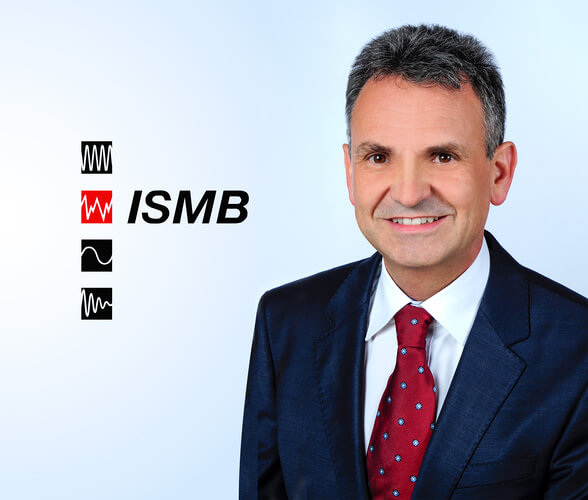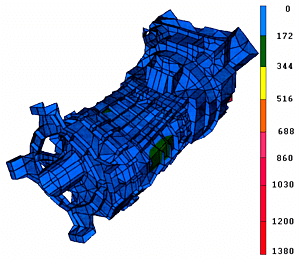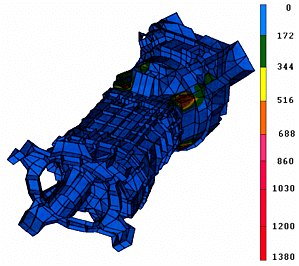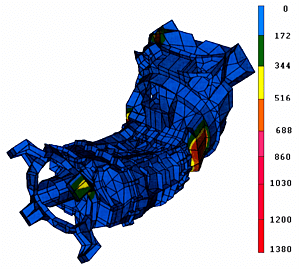Drive line of a commercial vehicle
In the case of a drive line (engine - gear unit - electric brake) of commercial vehicles, cracks in the connecting elements, such as clutch housing and retarder star, caused by vibrations often occurred. This is due to interactions of the various components.
To understand the causes for these cracks, a model was developed, which reproduces the entire drive line including the connecting parts. The model boundaries create the rigid body for the engine and the electromagnetic operating retarder. The FEA model reproduces the relevant vibration shapes of the described drive line.
The cracks in the clutch housing are caused by an excessive resonance rise due to the 1st horizontal bending shape. The horizontal bending is excited by reaction forces in the bearings, which vary depending on the gear. It was determined, that the clutch housing could be safer to operate by softer transitions (rounded instead of in stages).
The cracks in the retarder star were caused by resonant vibrations in the form of a diagonal tilting of the retarder. The reason for this is the very uneven stiffness distribution of the retarder star extensions. A more evenly stiffness distribution on the retarder star could be achieved by additional ribs. The cracks in the retarder star could be eliminated by this measure.
The original assumption that the vertical vibrations lead to the cracks described above, was disproved by these investigations. This conclusion was also confirmed by the results from DMS measurements. Thus, lateral bending, torsion and vertical bending do not play a significant role in the operating stability of the tested drive line.
Our specialists are always at your disposal to flexibly respond to your respective requirements and wishes.
Dr. Michael Elbs, Managing Director


Torsion and bending superimposed

1st horizontal bending

Retarder (diagonal tilting)

2nd vertical bending

